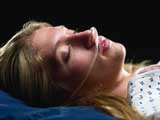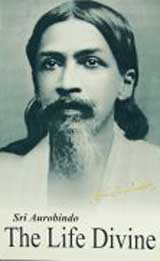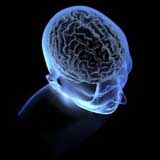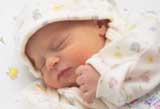Medical research
Mental awareness in comatose patients and sleeping newborn infants
Editor’s note
The phenomenon of unconsciousness is a mystery. A greater mystery is consciousness itself. Scientists and mystics have been exploring the secrets of consciousness for centuries but it is only relatively recently that there has been a more general upsurge of interest in it. Among the many explorers of this undefined and uncharted field, we are fortunate to have had amongst us Sri Aurobindo, the mystic par excellence, who explored this little-known territory in all its profundity, height and depth. Besides sounding its abysses, he also described its various shades and ranges, its levels and appropriate functioning and their interconnectedness and influence upon earth and humanity. There is now a real wealth of spiritual science left at our doorstep. This article explores just a few of the facets in the consciousness/unconsciousness dimension, drawing its insight from Sri Aurobindo and the Mother with appropriate parallels from the world of documented data.
Introduction
Until recently, comatose patients who did not regain awareness in a few weeks would be written off as hopeless, but advances in neuro-imaging technologies have revealed that comatose patients continue to display a degree of mental awareness. Scientists have found that disorders of consciousness are not an on-off phenomenon but span a continuum. These results validate remarks made by Sri Aurobindo and the Mother several decades ago. That is the subject of the first section below. The second section discusses the surprising learning abilities exhibited by sleeping newborn babies.
Comatose patients
The phenomenon of unconsciousness is a mystery which has occupied the minds of the greatest of psychologists. Where does our consciousness withdraw when we become unresponsive? Why does our body not decay? Sri Aurobindo has presented his views in the chapter titled ‘Life’ from The Life Divine:
“Even when a form appears to us to be dead, this [life-] force still exists in it in potentiality although its familiar operations of vitality are suspended and about to be permanently ended. Within certain limits that which is dead can be revived; the habitual operations, the response, the circulation of active energy can be restored; and this proves that what we call life was still there in the body, latent, that is to say, not active in its usual habits, its habits of ordinary physical functioning, its habits of nervous play and response, its habits in the animal of conscious mental response. It is difficult to suppose that there is a distinct entity called life which has gone entirely out of the body and gets into it again when it feels — how, since there is nothing to connect it with the body? — that somebody is stimulating the form. In certain cases, such as catalepsy, we see that the outward physical signs and operations of life are suspended, but the mentality is there self-possessed and conscious although unable to compel the usual physical responses. Certainly, it is not the fact that the man is physically dead but mentally alive or that life has gone out of the body while mind still inhabits it, but only that the ordinary physical functioning is suspended, while the mental is still active (emphasis added).
So also, in certain forms of trance, both the physical functionings and the outward mental are suspended, but afterwards resume their operation, in some cases by external stimulation, but more normally by a spontaneous return to activity from within. What has really happened is that the surface mind-force has been withdrawn into subconscious mind and the surface life-force into sub-active life and either the whole man has lapsed into the subconscious existence or else he has withdrawn his outer life into the subconscious while his inner being has been lifted into the superconscient (emphasis added). But the main point for us at present is that the Force, whatever it be, that maintains dynamic energy of life in the body, has indeed suspended its outer operations, but still informs the organised substance. A point comes, however, at which it is no longer possible to restore the suspended activities; and this occurs when either such a lesion has been inflicted on the body as makes it useless or incapable of the habitual functionings or, in the absence of such lesion, when the process of disintegration has begun, that is to say, when the Force that should renew the life-action becomes entirely inert to the pressure of the environing forces with whose mass of stimulation it was wont to keep up a constant interchange. Even then there is Life in the body, but a Life that is busy only with the process of disintegrating the formed substance so that it may escape in its elements and constitute with them new forms. The Will in the universal force that held the form together, now withdraws from constitution and supports instead a process of dispersion. Not till then is there the real death of the body (1).”
Since he was not a doctor, Sri Aurobindo provided a generic description of unconsciousness devoid of medical jargon. His remarks need to be unpacked otherwise we are liable to miss their significance. There are four points he makes in the above passage:
First, there is a life-force which animates the body even when we are unconscious. Elsewhere, the Mother refers to this life-force as the ‘spirit (or life) of the form’ (2).
Second, there are certain cases like catalepsy, where the physical functioning is suspended while the ‘mentality is still there self-possessed and conscious’.
Third, there are other cases like trance, where both the physical functioning and the mentality are suspended. In these cases, the surface mind and life withdraws into the subconscious and either the whole man lapses into the subconscious or part of his inner being is lifted into the superconscient.
Lastly, he says that death occurs when the Will that held the form together withdraws. In other words, the psychic being withdraws from the physical form. It is only after this withdrawal that the life-force or ‘spirit of the form’ dissipates and the body begins to decompose.
In the second and the third points made above, Sri Aurobindo differentiates between two types of unconsciousness, one in which the mentality persists in the body and the other in which the mentality also recedes into the subconscious. Similarly, in 1967 the Mother corrected someone who opined that a person in coma was ‘unconscious’:
“…a woman who has been in a coma for sixty-five days….After fifty or fifty-five days (the whole family was around her, but her son had gone to work), all of a sudden after fifty-five days, because her son had left, she started calling for him, shouting frantically! (Laughing) I think they all had a scare…. And the usual stupid remarks: ‘She was unconscious.’ I said, ‘Good God! But why do you say she was unconscious, you know nothing about it!… She can’t express herself, but she isn’t unconscious.’ She is entirely conscious, only the means of expression are damaged, she can no longer use them (3).”
We shall return to these remarks after a general discussion of recent experiments on learning exhibited by comatose patients.
Advances in neuro-imaging (EEG, PET, MRI) have enabled scientists to gain new insights into the brain of patients under coma, anesthesia, Alzheimer’s dementia, hypnosis, other disorders and even people in meditation. They have discovered that disorders of consciousness are not an on-off phenomenon but span a continuum characterised by varied degrees of responsiveness.
In the diagnostic system they have created, consciousness can be measured by two components: arousal (wakefulness or vigilance) and awareness (of self and environment). Arousal is supported by brainstem neuronal populations that project to both thalamus and cortex. Awareness is dependent on the functional integrity of the cerebral cortex and its subcortical connections (4). Arousal is a prerequisite to awareness. Four different conditions have been delineated when it comes to comatose patients: coma itself, the vegetative state, the minimally conscious state, and the locked-in syndrome.
Coma (i.e. Greek koma for ‘deep sleep’) is a state where the patient exhibits no arousal or awareness, no sleep-wake cycle, performs only reflexive movements and is incapable of communication. It is characterized by a failure of the alerting system in the brain (ascending reticular system or ARAS) (5).
One step above coma is the ‘persistent vegetative state’ defined by Plum and Jennett in 1972. The patient shows arousal but not awareness, has sleep-wake cycles, is capable of withdrawing from noxious stimuli and is startled by audio or visual stimuli.
The next stage closer to full consciousness is the ‘minimally conscious state’. This was a new category first defined in 1995. The patient shows partial awareness; the eyes exhibit sustained visual pursuit; the patient may smile or cry in response to his or her mother’s voice but remain unresponsive to neutral stimuli.
The stage closest to full consciousness is the ‘locked-in syndrome’. The patient has full arousal and awareness but is incapable of speech, limb or facial movements due to motor paralysis (6). An example of this condition is Jean-Dominique Bauby, the editor of the fashion magazine Elle, who in 1995 recovered from a coma to find himself in a locked-in syndrome except for left eyelid movement. With the help of an ameneunsis with whom he communicated using eye blinks, he wrote a memoir to describe his condition The Diving bell and the butterfly (Le scaphandre et le papillon), which was recently made into a movie with the same name. Bauby died in 1997 (7).
In a pioneering study done in 2005, Adrian Owen and his colleagues discovered that supposedly unresponsive vegetative or minimally conscious patients have functioning minds. When Owen asked a vegetative patient to imagine playing tennis or moving around her home, brain-imaging showed that the patient’s brain had activated the same cortical areas that were being activated in healthy volunteers (8). In other studies, vegetative patients and healthy volunteers were asked to imagine squeezing their right hands in response to a beep. In both cases, brain-imaging showed activity in the pre-motor cortex, the area of the brain which is activated when we plan and prepare movements (9).
In another study conducted by Tristan Bekinschtein, vegetative and minimally conscious patients were tested for Pavlovian conditioning. In this test, the patient was subjected to a beep followed by a puff of air to the eyes. Initially, the patient blinked after the puff of air, but after repeated trials, the patient learned to associate the puff of air with the beep and begins to blink after the beep but before the puff of air. The same studies conducted on patients under anesthesia (specifically, those under propofol for an endoscopic procedure) exhibited no learning. In other words, anesthetised patients are in a deeper state of unconsciousness than patients who are vegetative or minimally conscious (10). Emery Brown has found that general anesthesia is not like deep sleep but more like a ‘reversible coma’. It is due to this powerful depression in brain function that some patients do not fully recover consciousness for several hours after general anesthesia (11).
It is time to return to the earlier remarks of Sri Aurobindo and the Mother and see how they align with recent research results. The Mother’s 1967 remark that a coma patient couldn’t express herself but was entirely conscious is confirmed by recent discoveries of vegetative and minimally conscious patients who display mental activity.
Sri Aurobindo differentiated between two types of unconsciousness:
In the first, he said the physical functioning is suspended but the mentality persists in the body. This case is quite similar to recent findings on vegetative and minimally conscious patients whose brain scans continue to display mental activity even though they appear physically inert.
In the second, he said that the surface mind and life withdraws into the subconscious and either the whole man lapses into the subconscious or part of his inner being is lifted into the superconscient. This corresponds to the cases of patients under coma or general anaesthesia.
We shall now discuss some surprising results related to sleeping newborn babies.
Sleeping newborn babies
As if immobilised coma patients were not enough, scientists have also been tormenting adorable one and two-day-old babies through their experiments. Much to their surprise, they discovered that sleeping newborn babies can also exhibit Pavlovian conditioning. William Fifer and his colleagues subjected sleeping babies to a musical tone followed by a puff of air directed at the eyes. After repeated trials, the newborn babies began to scrunch their eyes immediately after hearing the musical tone (12). When Tristan Bekinschtein conducted the same experiment on adults, it failed because they woke up immediately. This suggests that adult sleep is different from the sleep of babies (13). In another study, Sullivan paired a citrus odour with tactile stimulation which produced a head-turn in the babies. The following day, the babies continued to display the head-turn. This response was observed irrespective of whether the babies were awake or asleep (14).
What could account for this startling difference? Scientists ascribe it to the greater plasticity of the neonatal brain, but I speculate that it is because babies do not possess the layer of subconscious baggage that develops in adults. As a result, while most adults plunge into a stupefied subconscious sleep, newborn babies sleep in a vibrant and responsive subliminal consciousness.
Conclusion
Science is moving inexorably towards the discovery of the subliminal aspects of the human consciousness, even while it lacks a definitive model of consciousness with the commensurate explanatory power. Sri Aurobindo and the Mother have given a detailed model of consciousness comprising of various planes and parts of the being which provides a satisfying explanation for the range of phenomena being uncovered. As scientific results begin to validate the insights of Sri Aurobindo and the Mother, this creates new opportunities to revive and inject their integral psychology into the scientific mainstream.
References
1. Sri Aurobindo. SABCL, Volume 18. Pondicherry; Sri Aurobindo Ashram Trust, 1970, pp. 180-1.
2. The Mother. Mother’s Agenda, Volume 1. Paris; Institut de Recherches Évolutives, 1979, p. 376 (see also Volume 3, pp. 241-2, Volume 4, pp. 272-4, Volume 9, pp. 247-50).
3. Op. cit. Mother’s Agenda, Volume 8. Paris; Institut de Recherches Évolutives, 1993, p.349.
4. Boly, M. et al. ‘Brain function in altered states of consciousness: comparison between Alzheimer Dementia and Vegetative State’ in (ed.) Miao-Kun Sun. Cognitive sciences at the leading edge. New York; Nova Science Publishers, 2008, pp. 44-64.
5. Young, G.B. Coma. Annals of the New York Academy of Sciences; 1157: 32-47. http://www.ncbi.nlm.nih.gov/pubmed/19351354
6. T. Giacino, et al. The minimally conscious state: definition and diagnostic criteria. Neurology; 58: 349–353. http://www.neurology.org/content/58/3/349.full
7. Op. cit. Coma. Annals of the New York Academy of Sciences; 1157: 32-47.
8. Owen, A. et al. Detecting awareness in the vegetative state. Science 8 September 2006; 313(5792): 1402. http://www. sciencemag.org/content/313/5792/1402
9. Carey, B. Study finds signs of awareness in 3 ‘Vegetative’ Patients. New York Times Nov. 9, 2011; http://www.nytimes.com/2011/11/10/health/research/brain-exam-detects-awareness-in-3-vegetative-patients.html
10. Harmon, K. Conditional conscious-ness: patients in vegetative states can learn, predicting recovery. Scientific American December 2009; http://www. scientificamerican.com/article. cfm?id= learning-in-vegetative-state
11. Brown, E. et al. General anesthesia, sleep and coma. New England Journal of Medicine December 2010; 363:2638-50. http://www.nejm.org/doi/full/10.1056/NEJMra0808281
12. Fifer, W.P. et al. Newborn infants learn during sleep. Proceedings of the National Academy of Sciences June 2010; 107(22):10320-3, 10.1073/pnas. 1005061107
13. Barley, S. Sleeping newborns are data sponges. New Scientist 19 May 2010; http://www.newscientist.com/article/dn18933-sleeping-newborns-are-data-sponges.html
14. Tarullo, A.R. et al. Sleep and Infant learning. Infant Child Dev January 2011; 20(1):35-46. http://onlinelibrary.wiley.com/doi/10.1002/icd.685/abstract
Sandeep Joshi is a computer engineer currently living in the India. He writes an Integral Yoga blog at http://www.auromere.wordpress.com
Share with us (Comments, contributions, opinions)
When reproducing this feature, please credit NAMAH, and give the byline. Please send us cuttings.



 Universal force
Universal force
 Decomposition
Decomposition
 Neuro-imaging
Neuro-imaging

 A sleeping newborn baby
A sleeping newborn baby